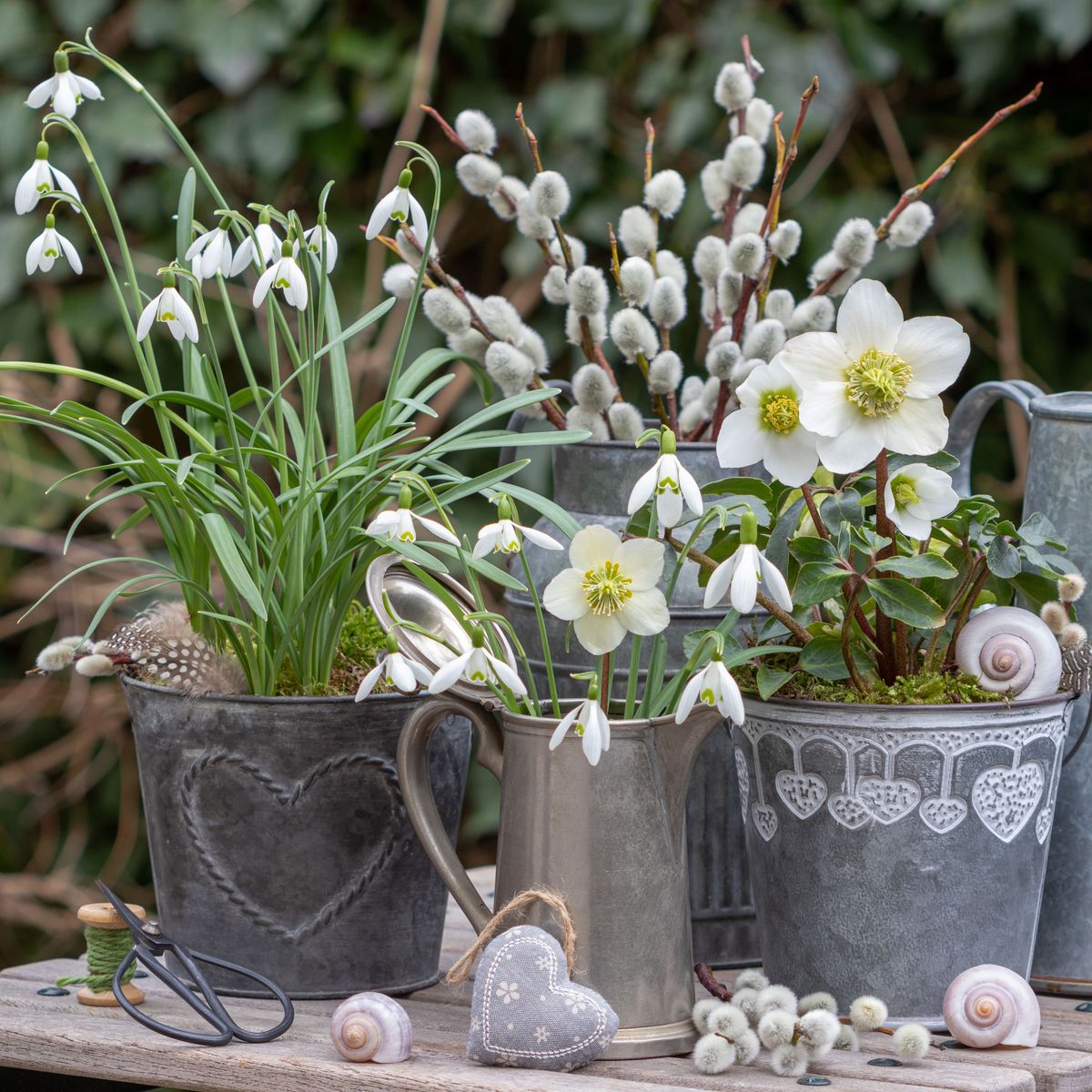We shared some beautiful photos from Mary Murphy last week, and today we’ve got some more beautiful scenes from her garden in Minnetonka, Minnesota, where she had been gardening for about 15 years.
 This dahlia (Dahlia × variabilis, Zones 8–10 or as a tender bulb) is just beginning to open up.
This dahlia (Dahlia × variabilis, Zones 8–10 or as a tender bulb) is just beginning to open up.
 A hummingbird moth has come to visit this delphinium (Delphinium elatum, Zones 3–8). These moths get their common name because they beat their wings rapidly, like a hummingbird, and can be confused with the tiny birds at first glance. The adults feed on a wide range of different flowers, but their caterpillar life-stage needs honeysuckles (Lonicera spp.), dogbane (Apocynum cannabinum), or a few trees in the rose family for food.
A hummingbird moth has come to visit this delphinium (Delphinium elatum, Zones 3–8). These moths get their common name because they beat their wings rapidly, like a hummingbird, and can be confused with the tiny birds at first glance. The adults feed on a wide range of different flowers, but their caterpillar life-stage needs honeysuckles (Lonicera spp.), dogbane (Apocynum cannabinum), or a few trees in the rose family for food.
 A dragonfly resting on a jalapeno plant. Clearly, Mary does not just grow beautiful plants, but she has also made her garden a great habitat for insect visitors as well.
A dragonfly resting on a jalapeno plant. Clearly, Mary does not just grow beautiful plants, but she has also made her garden a great habitat for insect visitors as well.
 Lavender stardust daylily (Hemerocallis ‘Lavender Stardust’, Zones 3–9) has beautifully ruffled flowers. The petals have a feature called “diamond dust,” which makes them glitter in the sun. The glittering effect doesn’t show up well in photos but can be quite lovely in person.
Lavender stardust daylily (Hemerocallis ‘Lavender Stardust’, Zones 3–9) has beautifully ruffled flowers. The petals have a feature called “diamond dust,” which makes them glitter in the sun. The glittering effect doesn’t show up well in photos but can be quite lovely in person.
 Love-in-a-mist (Nigellla damascena, annual) is a beautiful annual that prefers cooler weather. The flowers are set in a cloud (or mist, if you will) of delicate, airy foliage.
Love-in-a-mist (Nigellla damascena, annual) is a beautiful annual that prefers cooler weather. The flowers are set in a cloud (or mist, if you will) of delicate, airy foliage.
 Daylily ‘On and On’ (Hemerocalis ‘On and On’, Zones 3–9). As the name suggests, this variety keeps putting out these beautiful pink flowers pretty much continuously through the summer and into fall.
Daylily ‘On and On’ (Hemerocalis ‘On and On’, Zones 3–9). As the name suggests, this variety keeps putting out these beautiful pink flowers pretty much continuously through the summer and into fall.
 ‘Quickfire’ hydrangea (Hydrangea paniculata ‘Quickfire’, Zones 3–9) is a variety selected for early blooming. It gets the hydrangea season off to an earlier start with white flowers that blush red as they age.
‘Quickfire’ hydrangea (Hydrangea paniculata ‘Quickfire’, Zones 3–9) is a variety selected for early blooming. It gets the hydrangea season off to an earlier start with white flowers that blush red as they age.
 If you touched this strawflower (Xerocrysum bracteatum, annual), you’d know where it gets its name. The blooms are very dry and papery to the touch, which means that in addition to being beautiful in the garden, they are easily dried for long-lasting displays indoors or in crafts.
If you touched this strawflower (Xerocrysum bracteatum, annual), you’d know where it gets its name. The blooms are very dry and papery to the touch, which means that in addition to being beautiful in the garden, they are easily dried for long-lasting displays indoors or in crafts.
 I love seeing the specks of yellow pollen on ‘Velvet Queen’ sunflower (Helianthus annuus ‘Velvet Queen’, annual), which promise to feed a host of pollinators as well as be beautiful.
I love seeing the specks of yellow pollen on ‘Velvet Queen’ sunflower (Helianthus annuus ‘Velvet Queen’, annual), which promise to feed a host of pollinators as well as be beautiful.











